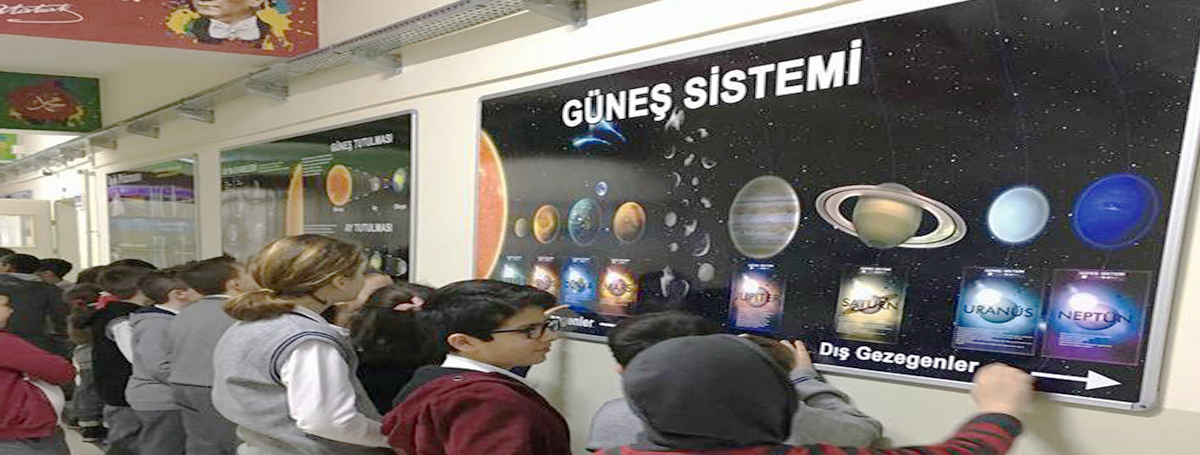
During the Ottoman Empire, a crucial goal of education was to raise 'excellent Muslims'. Thus there was a requirement for Islamic scholars, which was sustained through Islamic Faith Schools, called Madrasa.In 1913, the Medresetü-l Eimmeti vel Hutaba (School of ministers and preachers Medresetü-l Vaazin were integrated to form the concrete origins of today's Imam Hatip high schools
In 1924, the Tevhid-i Tedrisat (Law of Unification of Educational Guideline was passed, replacing the existing, mainly sectarian educational system with a secular, centralist and nationalist education one. The new law brought all educational organizations under the control of the Ministry of National Education. A Professors of Faith at the Darülfünun (Istanbul University), special schools for training imams and hatips (ministers and preachers) were opened by the new Ministry of National Education. However, in 1930 İmam Hatip schools were closed and 1933 the Professors of Divinity was eliminated.
In contrast to the specifically secularist nature of the education policy of the Republican People's Party (CHP) religious education was restored in 1948. This included the establishment of a Faculty of Theology at the University of Ankara in 1949. First actions for the facility of Imam Hatip schools started in 1951 under the Democrat Celebration federal government, which established 7 unique secondary schools (Imam Hatip Okulları). In addition, in 1959 Islamic Institutes were opened for graduates of Imam Hatip schools.
Following the coup d'etat in 1960, Imam Hatip schools came across the danger of closure. Following the return to civilian politics and the introduction of the new constitution in 1961, graduates of Imam Hatip schools could just enrol in university programs if they had passed courses offered at secular schools. Throughout the premiership of Süleyman Demirel however, graduates of Imam Hatip schools were offered access to university without such requirements. The 1971 Turkish coup d'état introduced two essential reforms: firstly junior high Imam Hatip schools were eliminated, and in 1973 Imam Hatip schools were relabelled as Imam Hatip high schools. Under the subsequent National Education Basic Law, Imam Hatip schools were defined as occupation schools, where trainees were to be trained as preachers and ministers or prepared for higher education.
Imam Hatip schools grew gradually in the beginning, but their numbers expanded rapidly to 334 throughout the 1970s. The union federal government of 1974, developed by the CHP and the MSP (National Redemption Celebration), dedicated to resume junior high schools and providing the right of entry to university through evaluation. 230 brand-new Imam Hatip high schools were opened in a duration of almost four years. Throughout the 1974-75 school year the number of students participating in to the Imam Hatip high schools grew to 48,895. This number subsequently grew to 200,300 by 1980-81. In addition, females acquired the right of entry to Imam Hatip high schools in 1976. The expansion of Imam Hatip high schools is typically mentioned as the impact of the National Redemption Party's subscription of a number of coalitions with Nationalist Front federal governments.
Circumstance considering that 1980
The coup d'etat of September 12, 1980 is an important turning point in the history of Check out the post right here Turkey and also for the history of Ä°mam-Hatip high schools. Under military governance, graduates of Imam Hatip high schools acquired the right of entry to all university departments. In 1985, two new Imam Hatip high schools opened, one in Tunceli, despite of the so-called ethnic structure of the area, and the other in Beykoz as an Anatolian Imam Hatip High School, with the objective of contributing to the education of kids of families who work abroad. Although the variety of Imam Hatip high schools had actually not increased since, the variety of trainees going to Imam Hatip high schools has increased by 45%. This is partially due to the enhancement in the quality of Imam Hatip high schools and the education offered at such schools.
Throughout the education year of 1973-74, the total number of Imam Hatip trainees was 34,570; in 1997 this number had sharply increased to reach 511,502. Together with this huge boost in appeal, the number of schools also increased. The number of Imam Hatip junior high schools reached 601 and secondary schools 402. The increase in both student and school numbers can be attributed to aspects including the commitment of people to religious beliefs, dorm facilities, scholarships, the admittance of females and an increase in need for spiritual education.
Research recommends that between the years of 1993 and 2000, prospective students signed up at Imam Hatip high schools mostly to get religious tutoring alongside a more general education.In addition, research shows enrolment at Imam Hatip high schools was based exclusively on the trainee's choice. The third suggested factor in the rise in popularity of Imam Hatip schools is the admission of female trainees in 1976. By 1998, nearly 100,000 women attended Imam Hatip high schools, making up almost half of all students. This statistic is especially exposing because females are not qualified to become either priests or ministers.
However, the intro of eight years of obligatory education in 1997 has actually seen an unexpected decline in the appeal of Imam Hatip schools. In 1999, the reclassification of Imam Hatip schools as "occupation schools" indicated that, although more options had actually been made readily available to graduates, obtaining locations at prominent university courses became more difficult.By requiring that all 8 compulsory years of schooling be invested under the exact same primary-school roof, intermediate schools were eliminated. Kids might not get in professional schools (one of them the Imam Hatip school) till the ninth grade (rather than the sixth, as prior to).